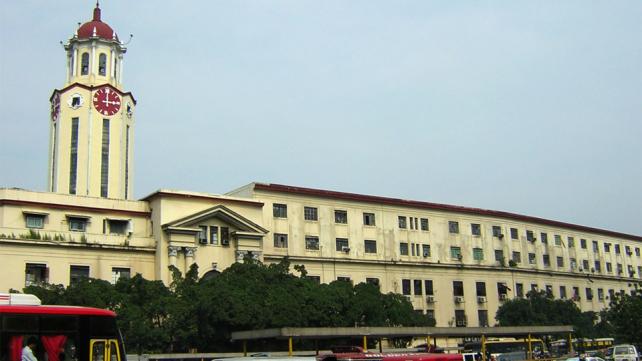
The long-awaited second act of President George Bush's worldwide `war against terrorism opened last week with the official announcement that 650 US troops would conduct `military exercises in the southern Philippines against the Muslim rebel movement, Abu Sayyaf.
In fact, this column has learned that US troops have secretly been conducting operations with the Philippine military against Abu Sayyaf since last fall. Once again, the US is getting embroiled in a complex region about which very little is known.
This is the second time in just over 100 years US troops are in action against the Moros, or Muslims of the southern Philippines. After the US ousted Spain from the Philippines in 1901, and made the island nation an American colony, the Moro sultanates of Mindanao and Sulu resisted fiercely, as they had fought the previous Spanish occupiers for 350 years.
The famed Colt .45 pistol was invented specifically to knock down sword-wielding Moro warriors whose courageous but suicidal attacks gave us the Malay term, `running amok. After heavy fighting and the massacre of large numbers of Moro civilians, the US finally conquered the southern Philippines. The American colonial government moved large numbers of Christian settlers into the southern Philippines in order to undermine Moro nationalism.
But the region, and its 6 million Muslims, remain apart and distinct from the rest of the 71 million Christian Filipinos. During the 1960s and 1970s, Christian settlers, backed by the Manila government, began pushing into the economically backward, long-neglected south, in many cases stealing land and driving out its Muslim owners in a campaign of ethnic cleansing. Civil war erupted Muslim farmers fought back. During the regime of Ferdinand Marcos, the Philippine Army and gangs of paramilitary thugs killed an estimated 50,000 Muslims from 1969-1971 without a peep of protest from Marcos American sponsors.
Two years later, the Moro National Liberation Front was formed in response to Marcos imposition of martial law. The MNLF, which was financed by Libya, called for an independent Muslim state -Bangsomoro. Three years of heavy fighting between the MNLF and the US-armed Manila regime left over 100,000 Muslims dead; 250,000 were driven from their homes. The world again ignored this massacre.
In the mid-1970s, Libya brokered a peace between Manila, the MNLF, and a breakaway group, the MILF. The MNLF leader, Nur Misuari, joined the government, and rebel forces were integrated into the national army. The Muslim regions of southern Philippines were granted autonomy. But tensions simmered on. Christian settlers continued to press south; Moro factions battled with one another and failed to develop effective local government.
In 1996, a breakaway separatist faction, Abu Sayyaf, rejected the peace accords with Manila and waged a guerrilla war from the jungles of the southern islands. While originally a militant Islamic group battling for independence, in recent years, Abu Sayyaf, which numbered only a few hundred fighters, turned increasingly to banditry. Abu Sayyaf conducted kidnappings, bank robberies, and executed hostages. It currently holds two American missionaries shades of the Taliban.
Abu Sayyaf is a criminal, not terrorist, problem. The southern Philippines and the coastal regions around Malaysia and Borneo have traditionally been the haunt of pirates and bandits.
But the president of the Philippines, Gloria Arroyo, who, with the army, recently overthrew and jailed her predecessor, the flamboyant and buffoonish ex-movie actor, Joseph Estrada, went to Washington and claimed Abu Sayyaf and other Muslim groups were `linked to Osama bin Laden. This, of course, pushed Washington's hot button and immediately got Manila a pledge of a hundred million dollars in US aid and military assistance.
Bin Laden's al-Qaida did have some supporters in the Philippines and occasionally used safe houses in Manila. But to claim Abu Sayyaf or Nur Misuaris MNLF were close allies of bin Laden is a stretch. Misuari did resume fighting before Christmas, but this was due to murky factional disputes within his organization provoked by Manilas attempts to undermine his authority. He fled to Malaysia and was promptly arrested.
The troubles in the southern Philippines are not what the west terms terrorism, as President Arroyo claimed, but the result of centuries of land disputes, the denial of equal economic and political rights to the Bangsomoro Muslims, and tribal disputes.
But in Washington's new world view, any Muslims seeking independence whether in Kashmir, Chechnya, Palestine, or Mindanao are ipso facto terrorists. However, in East Timor a case that much resembles Kashmir and the Mindanao the US and its allies aided the Christian majority in seceding from Muslim Indonesia and winning independence. In short, a clear double standard.
The hundred million plus dollars Washington is giving Manila to fight `terrorism would be far better spent, were the US truly concerned about the Philippines, on education and economic improvement in the impoverished south. Instead, US aid will be stolen by government and military officials, or spent chasing a small number of Abu Sayyaf bandits through the jungles of Basilan Island.
Interestingly, the US is ignoring the long-running insurgency in the north by HUK communist guerrillas, who are every bit as nasty as Abu Sayyaf. It seems terrorism, in Bush's terms, applies only to Muslims.
This article was originally published on January 18, 2002.
"Manila City Hall" by Original uploader was Jhun80 at en.wikipedia - Transferred from en.wikipedia; transferred to Commons by User:Quadell using CommonsHelper.. Licensed under Public domain via Wikimedia Commons - http://commons.wikimedia.org/wiki/File:Manila_City_Hall.jpg#mediaviewer/File:Manila_City_Hall.jpg



Add new comment